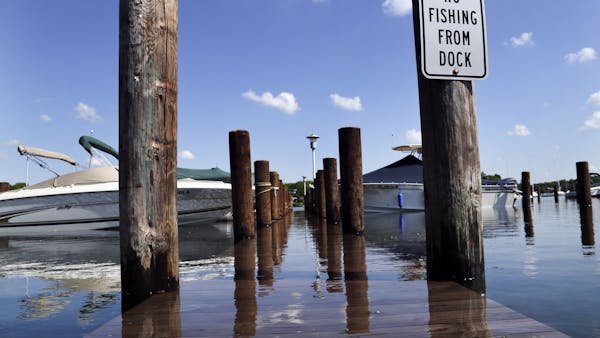After last weekend's torrential rains forced the city of Mound to pump untreated wastewater into Lake Minnetonka, some city leaders were quick to point a finger at the Metropolitan Council's regional sewage system.
Now the council says its system is not to blame.
On Monday, Mound Mayor Mark Hanus and state Sen. David Osmek, R-Mound, said the problem was not municipal sewers, but the Met Council's regional sewer system. They complained that for about a decade, the council had been promising a system upgrade and that its failure to deliver had come home to roost.
On Thursday, the Met Council shot back with a news release that opened, "Contrary to some reports, the Metropolitan Council's regional sanitary sewer facilities operated continuously throughout the weekend and were not the cause of the discharge. Rather, it was the inflow and infiltration of stormwater into the Mound municipal sewer system that caused the spill."
"Inflow and infiltration," which is what happens when rain water and groundwater enter the sanitary sewer system, "is a costly and messy adversary," Metropolitan Council Environmental Services General Manager Leisa Thompson said in a statement.
Carlton Moore, Mound's director of public works, said that every sewer system in the area was overloaded this past weekend. "We couldn't handle it," he said. "Nobody could handle it."
Problems arose, he said, because the Met Council's regional system got so full that the Mound system couldn't feed into it. Mound, which is one of several communities with sewer systems that feed into the larger regional system, is one of the last in line to reach the regional sewers, and when Mound's turn came, those sewers were already full.
"Their system functioned and our system functioned, but there was so much water we couldn't discharge," Moore said.
He said the Metropolitan Council has been telling him something similar to what they've said publicly — that the problem isn't on their end. "I don't think it's right for them to point at us," he said.
The differing approaches to defining the problem echo long-standing areas of dispute between some west metro communities and the Metropolitan Council over issues arising from aging infrastructure and rapid population growth and development.
The high-water hazard
After the city started releasing sewage into Lake Minnetonka — the metro area's biggest and busiest recreational lake — swimmers were warned away because of the E. coli risk. A high-water declaration was in effect for the lake, with speed limits and wake restrictions to protect the public and help prevent damage to the shoreline, boat lifts and other structures. In some areas, the high water has closed small neighborhood roads and surrounded some homes.
Another consequence of the additional water was the closing of two Lake Minnetonka beaches — both of which have reopened — due to excessive contaminants in the water. Three beaches in Mound, closed earlier in the week after the sewage release, have been reopened.
"High water levels mean a fast and strong-moving current, which many boat operators and swimmers are not used to, and that can create dangerous situations," said Kara Owens, Department of Natural Resources boating specialist. The high water can also bring debris, which can damage boats and cause injuries.
This year in Minnesota, one person has died in a boating accident and six have drowned.
Staff writer Paul Walsh contributed to this report. Emma Nelson • 612-673-4509

A plume of PFAS chemicals under the east metro is moving. The state has a new plan to stop it.

Andover High School teacher leads effort for more understandable driver's tests

Trail section at one of Minnesota's most iconic spots closing for rehab

Will 'shotgun only' zone for deer in southern Minnesota be abolished?

